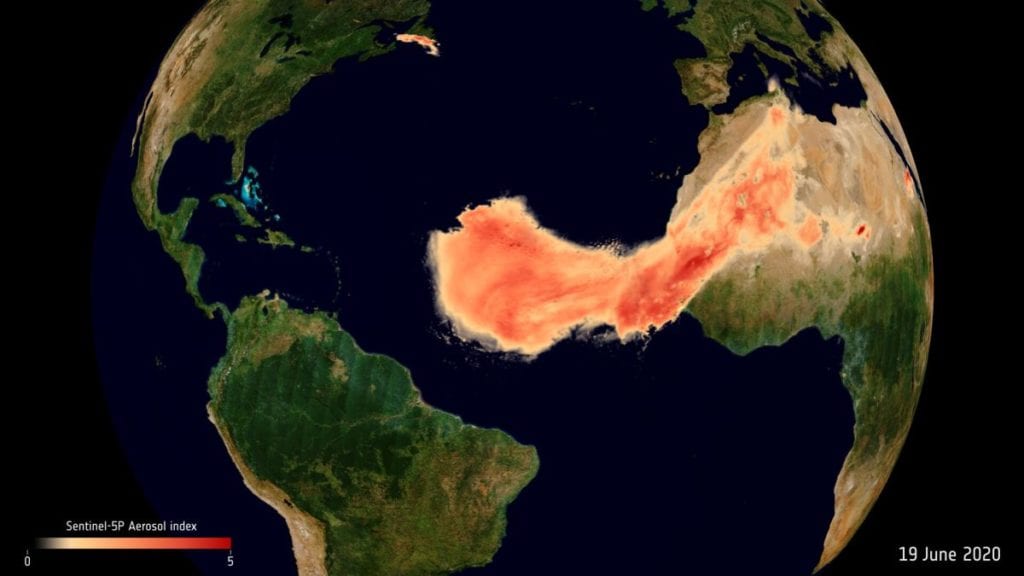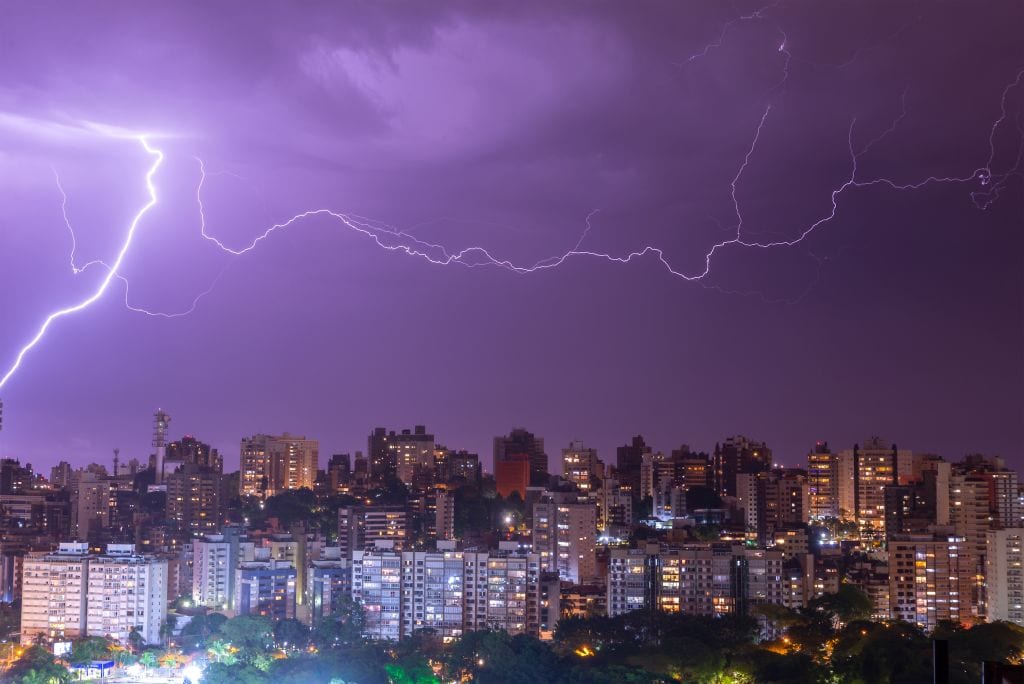 Animals
Animals  Animals
Animals  Weird Stuff
Weird Stuff 10 Strange and Unexpected Things Smuggled into Strict Authoritarian Countries
 Our World
Our World 10 Terrible Crimes That Are Destroying the Amazon
 Miscellaneous
Miscellaneous 10 Timely Stories about Clocks
 History
History 10 Magnificent Heroines Who Went Undercover to Defeat the Nazis
 Music
Music 10 Surprising Stories Behind Famous Songs
 Weird Stuff
Weird Stuff 10 Crazy Things Your Body and Brain Do (Explained)
 The Arts
The Arts 10 Historic Instruments Worth More Than a Luxury Car
 Technology
Technology 10 Crazy AI Controversies… So Far
 Movies and TV
Movies and TV 10 Fictional Plagues We’re Glad Aren’t Real
 Animals
Animals Ten Astonishing Stories about Underwater Life
 Weird Stuff
Weird Stuff 10 Strange and Unexpected Things Smuggled into Strict Authoritarian Countries
 Our World
Our World 10 Terrible Crimes That Are Destroying the Amazon
Who's Behind Listverse?

Jamie Frater
Head Editor
Jamie founded Listverse due to an insatiable desire to share fascinating, obscure, and bizarre facts. He has been a guest speaker on numerous national radio and television stations and is a five time published author.
More About Us Miscellaneous
Miscellaneous 10 Timely Stories about Clocks
 History
History 10 Magnificent Heroines Who Went Undercover to Defeat the Nazis
 Music
Music 10 Surprising Stories Behind Famous Songs
 Weird Stuff
Weird Stuff 10 Crazy Things Your Body and Brain Do (Explained)
 The Arts
The Arts 10 Historic Instruments Worth More Than a Luxury Car
 Technology
Technology 10 Crazy AI Controversies… So Far
 Movies and TV
Movies and TV 10 Fictional Plagues We’re Glad Aren’t Real
Top 10 Crazy Things Nature Does On A Massive Scale
Big oddities in nature tend to get noticed. But sometimes it takes a list to showcase the events that deserve more attention. Indeed, some are so strange that they seem fictional—like the air patch that wipes data and the migration of trillions of rocks across the ocean’s surface. For those who like their strange times a little bit more threatening, there is a toxic sea and the first earthquake that, uhm, boomeranged.
10 Most Terrifying Places on Earth
10 A Crater Turned Pink Overnight

Lonar Lake in India resembles most other lakes. You know, kind of round and filled with water. But Lonar, which was created by a meteorite strike 50,000 years ago, recently did something that set it apart from the rest. In June 2020, the water was dull and normal one day—and flamingo pink the next.
At the moment, the vivid flip remains a mystery. The leading theory suggests that several factors combined to create the color. A drop in the water level made the lake saltier and the days were also hot. This mix of saltiness and heat triggered a bloom of algae. More specifically, a kind that often turns red. Only in this case, the bloom went nuts and the overgrowth caused the flamingo moment.[1]
9 Waterfalls Flowing In Reverse

During another insane 2020 moment, somebody claimed that several waterfalls in Australia were running backwards. News crews investigated and found a grain of truth. The waterfalls were not reversing like a movie in Rewind Mode. However, in each case, misty water flowed back up and over the top of the cliffs. As magical as it seemed, the whole thing was a trick of the wind.
A few days before the waterfalls got weird, Sydney and the surrounding areas experienced storm conditions. The winds were strong enough to flood rivers and trigger evacuation orders for many families. But their speed, howling at roughly 70 km/h (45 mph), was also sufficiently powerful to sweep the course of the falls the wrong way. Once the weather settled, the waterfalls resumed their old look.[2]
8 The Red Sea Is A Natural Air Killer

Nestled between Africa and Arabia, the Red Sea is a busy bee. Thanks to the Suez Canal, this is one of the world’s most heavily used shipping lanes. The air is badly polluted and the prime suspects are clear. Indeed, industrial shipping and the intense use of fossil fuels in the area are not exactly filling the air with daisies. Unfortunately, the Red Sea is a busy bee in another way too.
In 2017, when researchers measured different gases in the region, the math did not add up. Even when they took into account the gross pollution caused by humans, the northern part of the Red Sea had 40 times too much ethane and propane. The only explanation was that both greenhouse gases are naturally released from reservoirs beneath the sea. The sheer volume that bubbles to the surface make the Red Sea a natural but major source of air pollution.[3]
7 The Godzilla Dust Plume

Each year, a cloud of sand leaves the Sahara Desert in Africa and heads out over the Atlantic Ocean. The technical term for this dust bunny is the Saharan Air Layer (SAL). But in 2020, the plume was so massive that scientists folded to awe and called this year’s cloud “Godzilla.”
The plume was the biggest since the first SAL event was logged 20 years ago. For some reason, it packed up to 70 percent more sand and despite its size and weight managed to travel for a greater distance than other Sahara plumes. Usually, the clouds face-plant in the Atlantic Ocean. Godzilla ghosted through the atmosphere for 8,000 kilometres (5,000 miles) and reached the United States.[4]
6 This Lightning Bolt Was Ridiculously Long

Two years ago, the weather turned crabby above Brazil. Some people might have appreciated the thunder and lightning because it was Halloween night after all. But one bolt took things to the extreme. When it cut through the atmosphere, it ran from the Atlantic coast into Argentina. All told, it measured over 700 kilometres (440 miles) long.
The mega-flash was long enough to link Chicago with Toronto or even Washington, D.C., with Boston. Satellite technology confirmed that this was a new record. The previous champion singed Oklahoma in 2007 and measured 320 kilometres (200 miles) long. Interestingly, neither holds the record for the most enduring flash. That bolt appeared over northern Argentina in 2019 and remained visible for 17 seconds.[5]
10 Ways Earth Once Looked Like An Alien Planet
5 Australia’s Coast Is Surrounded By Rivers

Nobody is arguing that Australia is the king of weird ecosystems. But in 2020, a new discovery surprised even the most salted experts. The continent appears to be surrounded by something found nowhere else in the world—a network of underwater rivers covering over 10,000 kilometres (6,200 miles) of coastline. While the phenomenon is not unknown, the scale is unprecedented. This alone makes the system one of the most significant finds in oceanography.
The underwater rivers are possible because their water is different; being more salt-dense and heavier than the ocean’s slosh. They also respond to the seasons. They are weaker in summer but during winter, the cascades turn denser and sink to the seafloor where they flow more strongly.[6]
4 Volcano F’s Stupendously Huge Rafts
The name might be dull but Volcano F is the source of something amazing. This underwater volcano hugs the seafloor near Tonga and erupts every few years. When that happens, pumice rocks are released and that is when things get interesting.
In 2019, Volcano F belched so much pumice that the floating rocks formed a raft the size of 20,000 football fields. For nearly a year, the raft floated across the ocean to Australia. By 2020, trillions of these rocks started washing up along 1,300 kilometres (807 miles) of coastline, reaching from Queensland to New South Wales. But that was not all.
On the way, each rock picked up organisms like barnacles, corals, and algae. The endless bobbing mass was like a bus bringing new recruits of reef-building critters to the beleaguered Great Barrier Reef. The event was not a one-time deal, either. Volcano F sends a pumice raft to the Reef roughly every five years for a much-needed boost.[7]
3 This Blip Is The Bane Of NASA

The Earth is a ginormous magnet. Its magnetic field protects the planet’s atmosphere—and human technology—from the sun’s particles. But this protective bubble has a weak spot. Called the SAA (the South Atlantic Anomaly), this is the one place where solar particles can enter the atmosphere and mess with expensive equipment.
The SAA covers a large area over South America and the Southern Atlantic sea. Any space station or equipment that passes through this region run the risk of data wipes or hardware damage. For this reason, NASA often switches off satellites that travel through the SAA until they are back under the proverbial magnetic umbrella.[8]
2 The Firefall Of Yosemite
During certain years, in February, a spectacular sight occurs in Yosemite National Park. There is a high waterfall with a delicate drop called Horsetail Fall. For most of the time, it looks like a thousand other waterfalls but for a few weeks at the beginning of the year, the transformation is so remarkable that tourists flock to the site.
Some call the event a “firefall” and it is easy to see why. The water seems to have mysteriously vanished. In its place, orange lava pours over the cliff, glowing with heat, steam, and fire. This optical illusion lasts for about 10 minutes and is caused by the setting sun’s position in the sky. Once the sun dips below a certain point, the waterfall returns to normal.[9]
1 An Earthquake That Boomeranged

A normal earthquake is bad enough. But one that suddenly turns around and runs over the same area? Definitely worse. In the past, something like this seemed impossible. Then it happened in August 2016. Nobody noticed the game-changing event because it happened deep under the ocean.
A 2020 study discovered the strange quake when researchers analysed the data from undersea seismometers. Nothing about the earthquake’s development was normal. Since it was born from a simple fault (the Romanche fracture zone near the equator), it should have been a textbook tremor. Instead, it mysteriously released the world’s first confirmed boomerang shake.
This was no hiccup. It was a major earthquake with a magnitude of 7.1. Even more terrifying, once it turned around the speed increased. The tremors raced back towards the centre of the fault with speeds clocking up to 6 kilometres per second (3.7 miles per second).[10]
Top 10 Iconic Places As You’ve Never Seen Them . . . Pictured From Behind








